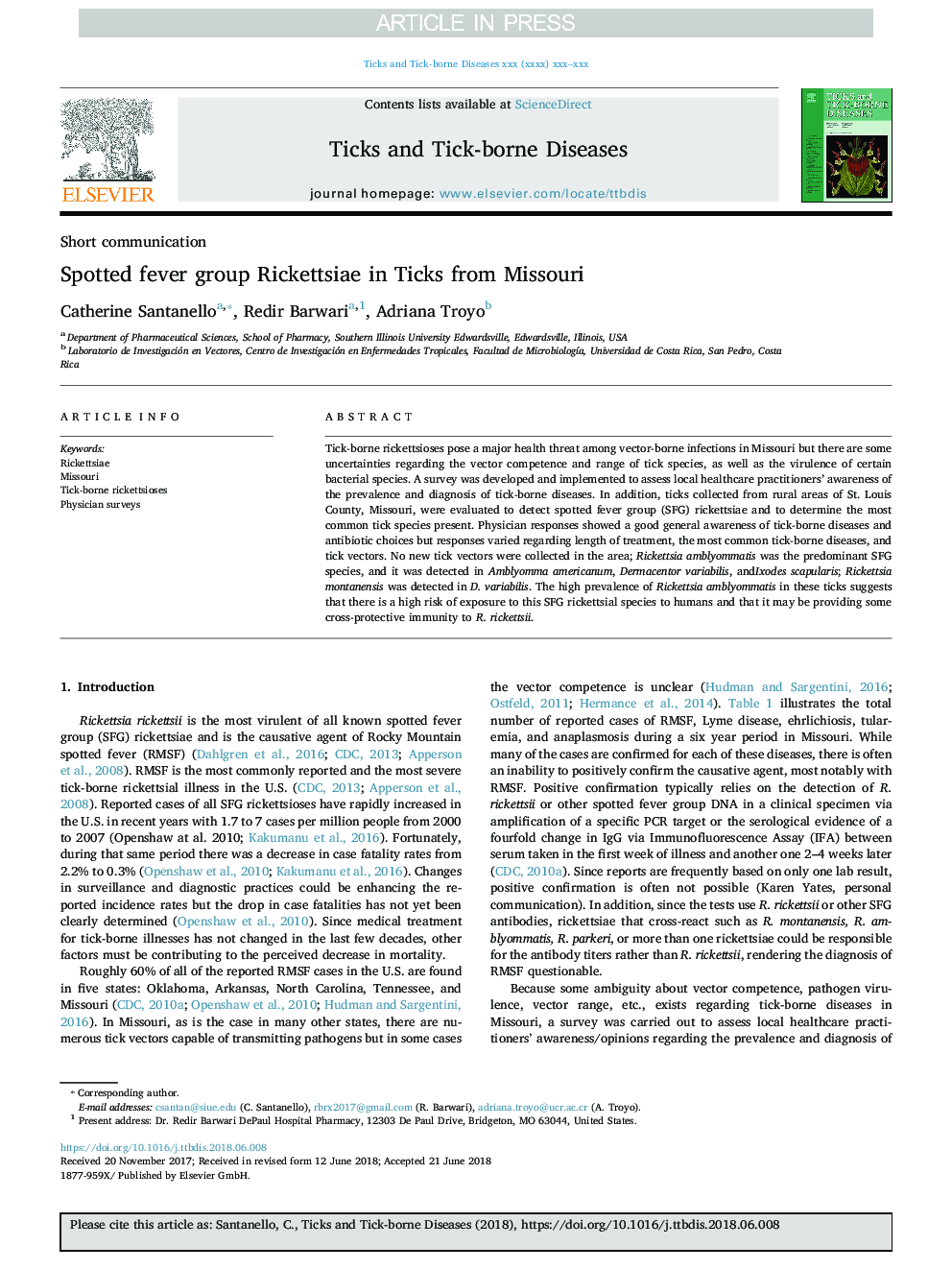| Article ID | Journal | Published Year | Pages | File Type |
|---|---|---|---|---|
| 8965623 | Ticks and Tick-borne Diseases | 2018 | 5 Pages |
Abstract
Tick-borne rickettsioses pose a major health threat among vector-borne infections in Missouri but there are some uncertainties regarding the vector competence and range of tick species, as well as the virulence of certain bacterial species. A survey was developed and implemented to assess local healthcare practitioners' awareness of the prevalence and diagnosis of tick-borne diseases. In addition, ticks collected from rural areas of St. Louis County, Missouri, were evaluated to detect spotted fever group (SFG) rickettsiae and to determine the most common tick species present. Physician responses showed a good general awareness of tick-borne diseases and antibiotic choices but responses varied regarding length of treatment, the most common tick-borne diseases, and tick vectors. No new tick vectors were collected in the area; Rickettsia amblyommatis was the predominant SFG species, and it was detected in Amblyomma americanum, Dermacentor variabilis, andIxodes scapularis; Rickettsia montanensis was detected in D. variabilis. The high prevalence of Rickettsia amblyommatis in these ticks suggests that there is a high risk of exposure to this SFG rickettsial species to humans and that it may be providing some cross-protective immunity to R. rickettsii.
Keywords
Related Topics
Life Sciences
Agricultural and Biological Sciences
Animal Science and Zoology
Authors
Catherine Santanello, Redir Barwari, Adriana Troyo,
